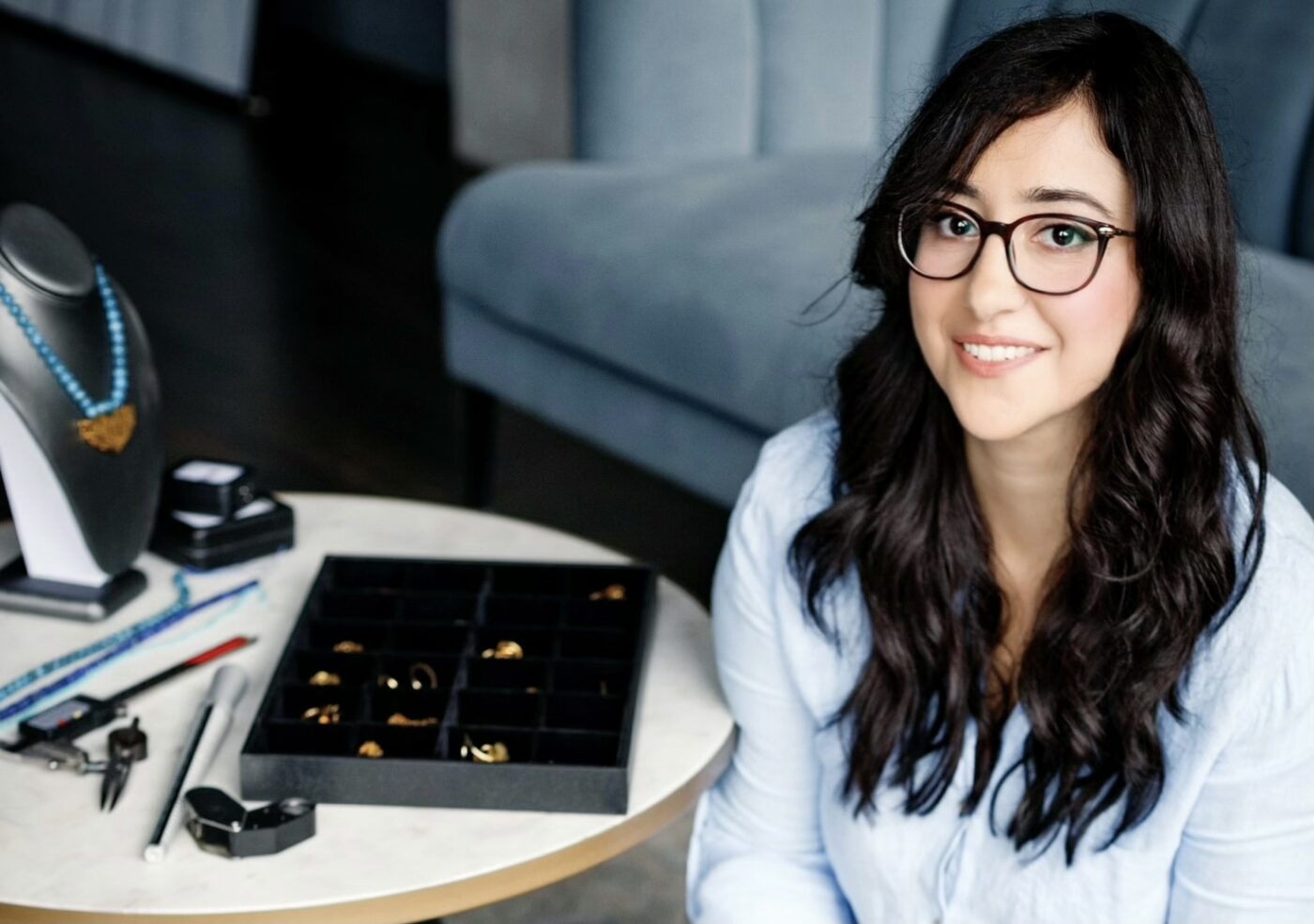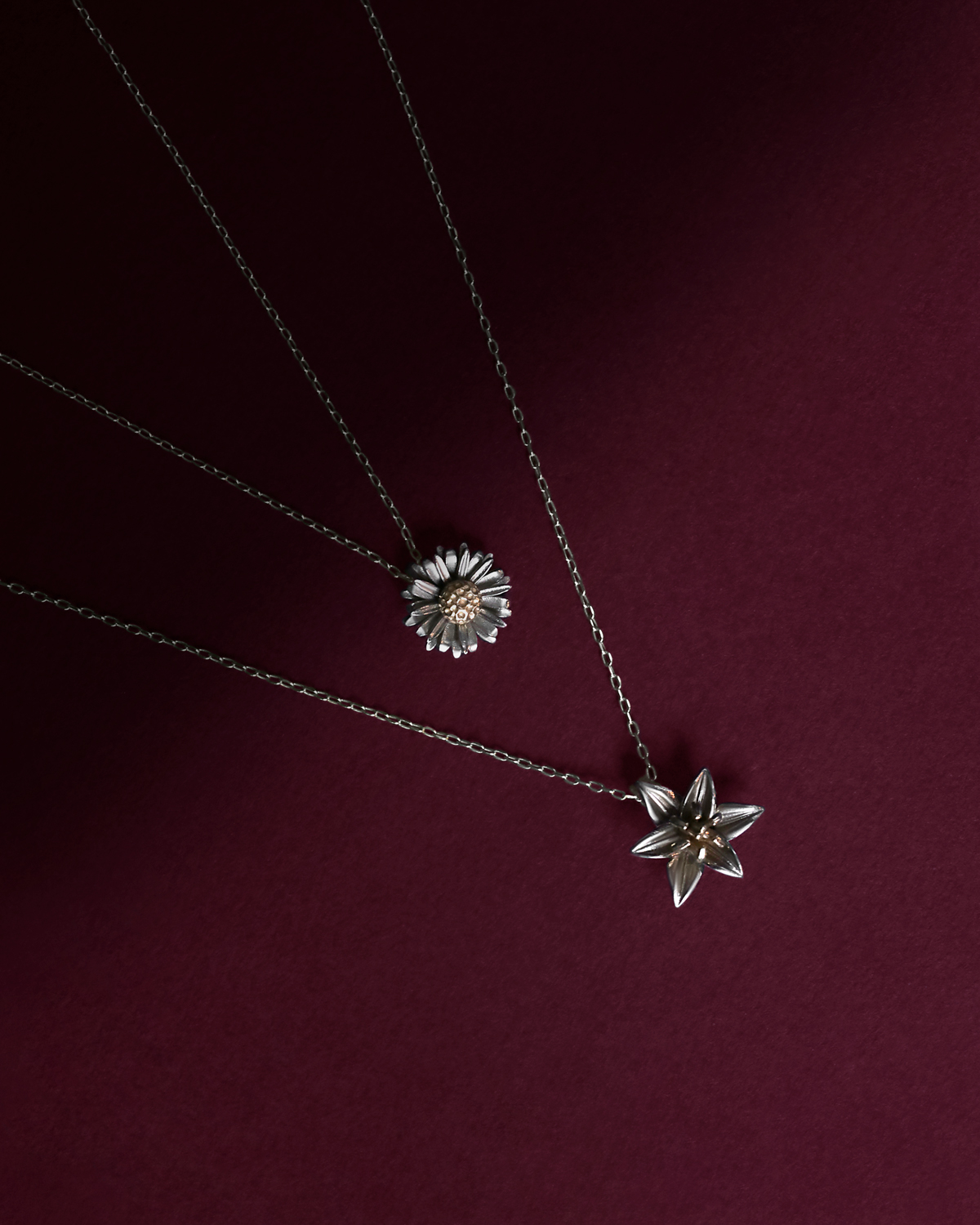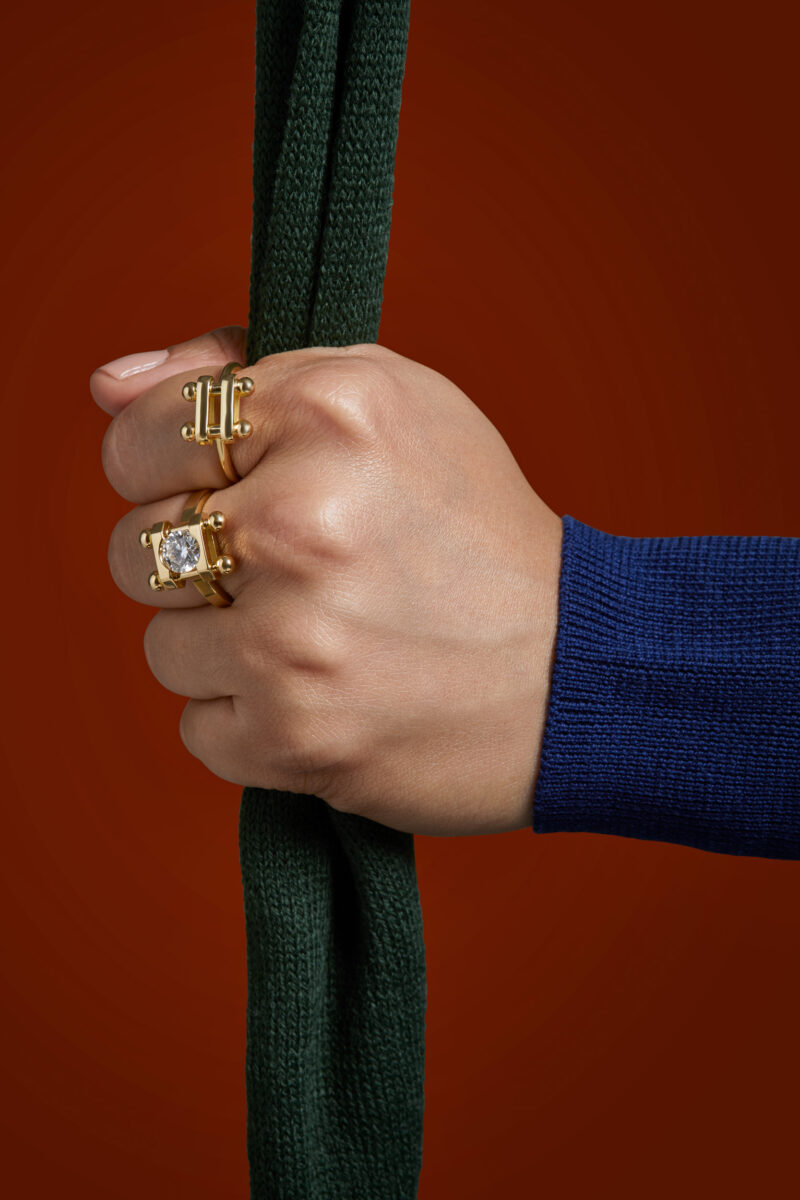Past and Future
Sanaz Doost’s creations are unique as they are dramatic. From bold statement rings to colourful beaded necklaces and exquisitely curved bangles, Doosts’ work pays homage to her Iranian heritage while pushing the limits of modern jewelry design.
A nomad, she left Iran in 2006, travelling the globe and working in Industrial Design after completing her Bachelor’s Degree in Industrial Design and Master’s in Philosophy of Art. With a curiosity about the intersection of art and design, she went to study jewellery manufacturing alongside master goldsmiths in the ancient gold bazaars of the Middle East, eventually moving to Canada to set up her studio in downtown Toronto.
It’s rare to find a jewelry designer who thinks as much about the transmission of light as Doost. Her Moshabak ring takes its inspiration from ancient Moshabak sunscreens, a staple in Iranian Architecture, her creations cast breathtaking, fleeting shadows onto the naked skin as the windows would a Persian rug. Pushing even further, Doost’s work draws direct inspiration from the city of Yazd with her dramatic gold domed rings – miniature buildings for the hands that are as clean-lined and modern as they are ancient.
Undoubtedly one of the most influential Canadian designers working today, Doost is a contemporary to be reckoned with.

Who are you?
A former Industrial designer & a global nomad. I abandoned my favourite lifestyle after 10 years of solo travelling around the world to launch my Toronto-based jewelry studio and to fulfil my dreams of creating sustainable, eye-catching fine jewelry with quality that can pass through generations.
What do you make/sell?
Bold, timeless and eye-catching 18K gold pieces that are designed & made locally and ethically in Toronto.
Where do you make/sell it?
I make all my designs locally and sustainably here in Toronto and I’m so passionate about sourcing everything locally. I sell my designs online on my website and in selected retailers and marketplaces like The Hudson’s Bay, Aga Khan Museum, The Fashion Art Toronto, 1stDibs etc.

When/why did you start?
I began my career as an industrial/product designer, having received Bachelor of Arts in Industrial Design in 2011. Later I pursued my passion for Art by studying Master of Philosophy of Eastern Art. While studying Design and Art I began taking courses in ancient metal smithing around the world at historical jewelry Bazars and trained by masters, then I got my Advanced Diploma of Jewelry Arts in 2020 at George brown college of Toronto and finally launched my jewelry atelier/showroom in the heart of downtown Toronto, Canada.

Where do you get your best ideas?
I left my motherland Iran when I was 19 in 2006 all alone by myself and solo travelled around the world since then till 2017 when I decided to settle down in Toronto. So basically, I get most of my ideas from my middle eastern roots, my experiences while travelling and from art, architecture, heritage, and different cultures.

Do you ever feel bored? What do you do about it?
Board no, disappointed yes! Lol, to be honest, I don’t feel bored because while I’m awake I’m designing something in my mind, on paper or on a computer. I can’t live without designing and I believe I was born to create. Even when I sit in a restaurant or a meeting, unconsciously I change the look, outfit, shoes and jewellery of people in my mind, and I design a new look for them and imagine them with it.
What’s the next big jewelry trend?
Hopefully geometric, clean designs like 1900 or loud, bold designs in 80s
What’s our industry’s biggest challenge?
Oh, believe me it’s a super challenging industry! From struggling with Copycats to being sustainable. For example, lots of people say that they prefer and support unique, original and sustainable jewelry but when it comes to action it’s totally different, I mean when they want to buy a jewelry, they don’t ask or research about where and how it’s made etc.
But as a designer with academic background in Arts and design the biggest challenge for me is to be a designer and a businesswoman at the same time, which is too difficult because in my opinion a designer and a businessman/woman doesn’t have anything in common! As a designer the idea comes first to my mind not the market & trends, as a designer designing a piece of jewelry is expressing my thoughts, feelings and emotions, but what should come to a businesswomen mind is market, trends and make something to sell fast and gain profit!
The truth is in our industry like any other industries we have businessman/woman who follow trends and end of famous & wealthy while I believe if an artist follows the trends ends of empty in her/his heart! To me being an artist with business goals is super challenging, I believe thinking about the market, weight and profit in order to make trendy and affordable and fast selling pieces kills the creativity and freedom of Art. But on the other hand, I know that if I want to be able to create the art that I’m capable of, somehow, I need to think as a businesswoman to make money to continue my dream. To me designing a jewelry is a way to express myself and feelings through art, and gold is my medium. To cut it short, the most challenging part for me is the contradiction between art and money, between being an artist and a businesswoman at the same time!

How do we fix it?
Unfortunately, I’m not sure, it’s complicated. For example, in Canada, lots of consumers don’t know the difference between made-in-Canada and Canadian brands. They don’t have enough information about sustainable jewelry, and they even don’t know the difference between gold-filled, gold plated and solid gold. Also, Canadian retailers don’t support Made in Canada brands as they should. Maybe we need more educational articles or a support system, and about the contradiction between art & money to be honest I have no Idea how to fix it.
Where do you want to see yourself creatively in five years?
As a former Industrial/Product designer I have lots of ideas about designing decorative objects which I would like to mix with fine metals, jewelry and gems. I hope I can work on it and launch my decorative objects line very soon.

If you could ask an industry peer one question, what would you ask and to whom would you ask it?
Bella Neyman, I would like to ask what does she think about the future of jewelry and AI (artificial intelligence)?
Questions and introduction written and laid out by Future Heirloom Editor Nicholas Hyatt. Answers are written by Sanaz Doost. Find Sanaz Doost online and on Instagram.




















